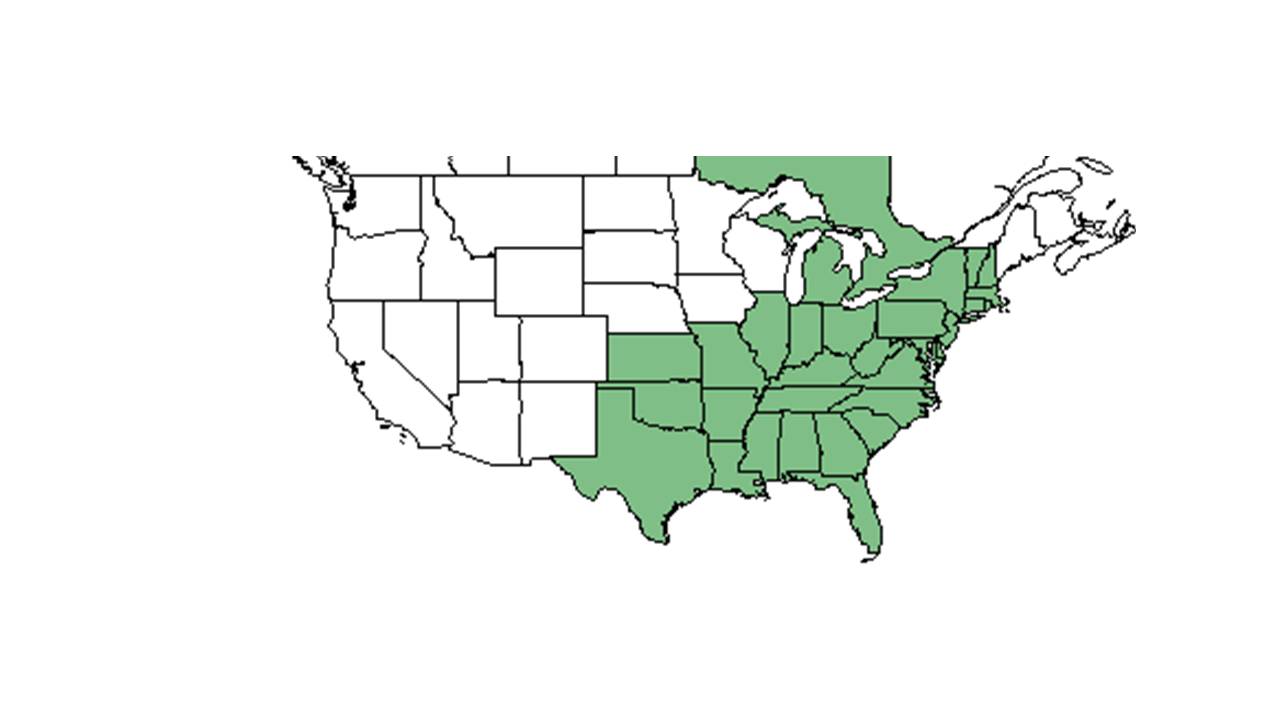Difference between revisions of "Desmodium rotundifolium"
(→References and notes) |
(→Ecology) |
||
| Line 26: | Line 26: | ||
==Ecology== | ==Ecology== | ||
===Habitat=== <!--Natural communities, human disturbed habitats, topography, hydrology, soils, light, fire regime requirements for removal of competition, etc.--> | ===Habitat=== <!--Natural communities, human disturbed habitats, topography, hydrology, soils, light, fire regime requirements for removal of competition, etc.--> | ||
| − | + | It is found in mixed hardwoods including pines, oaks, and hickories (FSU Herbarium). It is also found in lightly wooded hillsides, dry glacial drift, and open woods (FSU Herbarium). It requires shaded areas (FSU Herbarium). It is associated with drying sandy loam soil types (FSU Herbarium). | |
===Phenology=== <!--Timing off flowering, fruiting, seed dispersal, and environmental triggers. Cite PanFlora website if appropriate: http://www.gilnelson.com/PanFlora/ --> | ===Phenology=== <!--Timing off flowering, fruiting, seed dispersal, and environmental triggers. Cite PanFlora website if appropriate: http://www.gilnelson.com/PanFlora/ --> | ||
| − | + | It has been observed flowering from August through October and fruiting in September (FSU Herbarium). | |
===Seed dispersal=== | ===Seed dispersal=== | ||
===Seed bank and germination=== | ===Seed bank and germination=== | ||
===Fire ecology=== <!--Fire tolerance, fire dependence, adaptive fire responses--> | ===Fire ecology=== <!--Fire tolerance, fire dependence, adaptive fire responses--> | ||
| − | + | It becomes more robust in response to fire (FSU Herbarium). | |
===Pollination=== | ===Pollination=== | ||
===Use by animals=== <!--Herbivory, granivory, insect hosting, etc.--> | ===Use by animals=== <!--Herbivory, granivory, insect hosting, etc.--> | ||
===Diseases and parasites=== | ===Diseases and parasites=== | ||
| + | |||
==Conservation and Management== | ==Conservation and Management== | ||
==Cultivation and restoration== | ==Cultivation and restoration== | ||
Revision as of 10:16, 13 July 2015
| Desmodium rotundifolium | |
|---|---|

| |
| Scientific classification | |
| Kingdom: | Plantae |
| Division: | Magnoliophyta - Flowering plants |
| Class: | Magnoliopsida – Dicotyledons |
| Order: | Fabales |
| Family: | Fabaceae ⁄ Leguminosae |
| Genus: | Desmodium |
| Species: | D. rotundifolium |
| Binomial name | |
| Desmodium rotundifolium DC. | |

| |
| Natural range of Desmodium rotundifolium from USDA NRCS Plants Database. | |
Contents
Description
Common Name: Prostrate ticktrefoil
Flowers may be blue or light purple in northern states (FSU Herbarium). In southern areas, fresh corollas are rosy pink, then fading into a whitish color with age (FSU Herbarium). Creeping and trailing habit and prostrate(FSU Herbarium).
Distribution
Ecology
Habitat
It is found in mixed hardwoods including pines, oaks, and hickories (FSU Herbarium). It is also found in lightly wooded hillsides, dry glacial drift, and open woods (FSU Herbarium). It requires shaded areas (FSU Herbarium). It is associated with drying sandy loam soil types (FSU Herbarium).
Phenology
It has been observed flowering from August through October and fruiting in September (FSU Herbarium).
Seed dispersal
Seed bank and germination
Fire ecology
It becomes more robust in response to fire (FSU Herbarium).
Pollination
Use by animals
Diseases and parasites
Conservation and Management
Cultivation and restoration
Photo Gallery
References and notes
Florida State University Robert K. Godfrey Herbarium database. URL: http://herbarium.bio.fsu.edu. Last accessed: June 2014.
Collectors: L. C. Anderson, Wilson Baker, Patricia Elliot, H. Roth, V Craig, Bill Boothe, Marcia Boothe, Billie Bailey, G. W. Parmelee, H. A. Wahl, Norlan C. Henderson, Harry E. Ahles, R. S. Leisner, H. R. Reed, Charles M. Allen, Peter Raven, Tamra E. Raven, and R. Kral.
States and Counties: Indiana: Huntington. Florida: Gadsden, Jackson, and Liberty. Louisiana: Allen. Michigan: Barry. Mississippi: Pearl River. Missouri: Jefferson and Stone. North Carolina: Stanley. Pennsylvania: Bradford and Venango. Tennessee: Grundy.